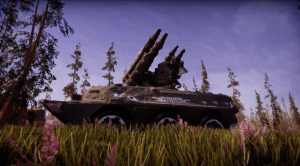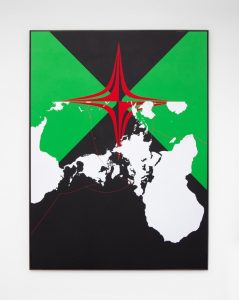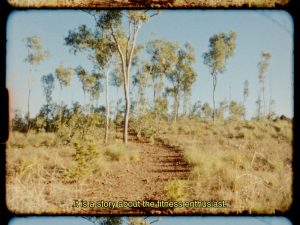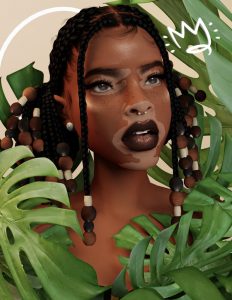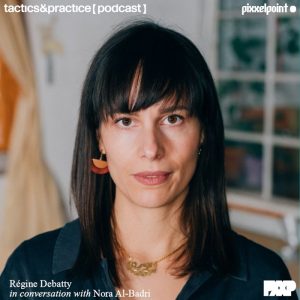The ongoing edition of the MOMENTUM biennial opened a couple of weeks ago. The air was a bit nippy but the company and the artworks were good. MOMENTUM was founded 20 years ago in Moss, a coastal town an hour drive away from Oslo. The first few editions had a resolute focus on Nordic art, an ambition to showcase the cultural “Nordic Miracle.” Over time, however, curators realized that pinpointing a precise sense of “nordicness” was not opportune. Not in this interconnected world, not when society and the art sphere in Nordic countries were becoming more and more multi-cultural. Today, you can still sense a Nordic feeling but the event has opened up to international contributors.
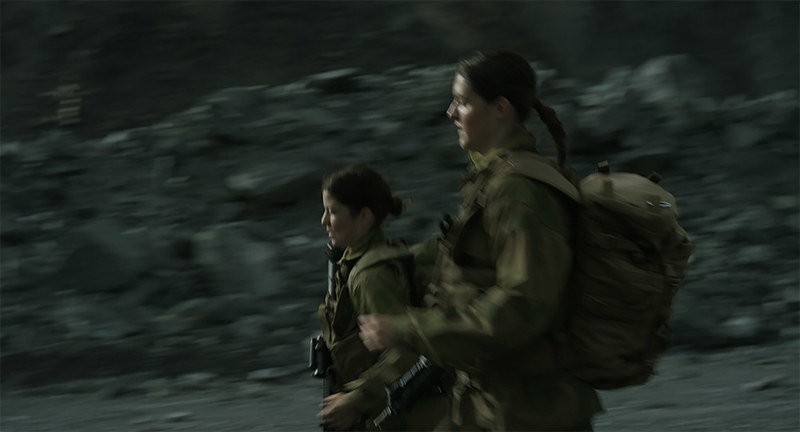
Knut Åsdam, Murmansk Kirkenes, 2018
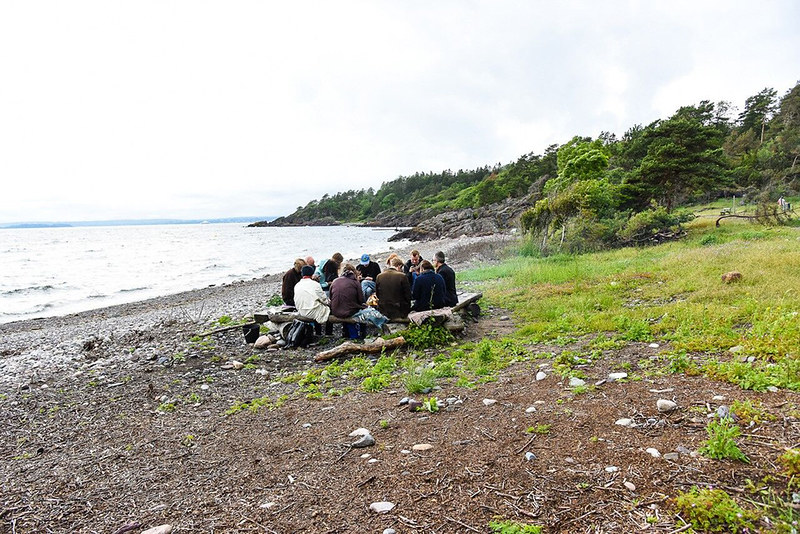
Ina Hagen, In the Before Over Shore, 2019. Performance for MOMENTUM10, The Emotional Exhibition. Photo by Ingeborg Øien Thorsland
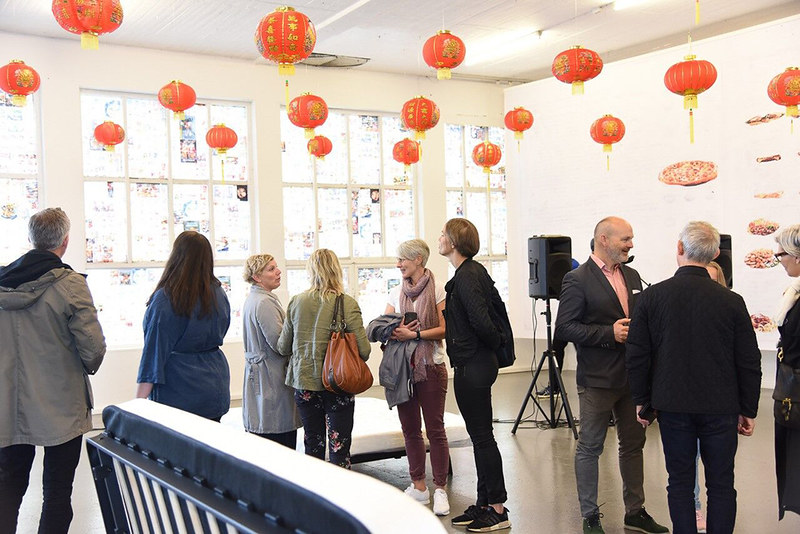
Pepo Salazar, Frozen, 2015. Installation view during the opening of MOMENTUM10
MOMENTUM10: The Emotional Exhibition intends to literally go back to emotions in order to move beyond the rational and embrace a more nuanced, more complex reality. That is exactly what art is supposed to do anyway which might explain why i didn’t find this biennial more emotional than many other ones.
MOMENTUM10 nevertheless stands out from other similar events thanks to curator Marti Manen‘s brilliant idea to mark the 20th anniversary of MOMENTUM with a hybrid exhibition that mixes new artworks with works that were developed and shown in previous editions. Some of them were brought back exactly as they had been shown in Moss years ago. Others had to be adapted for practical reasons or simply to respond better to the contemporary context. The mini-retrospective is both a reaction to the current speed of artistic production and an invitation to reflect on what MOMENTUM should keep from its history.
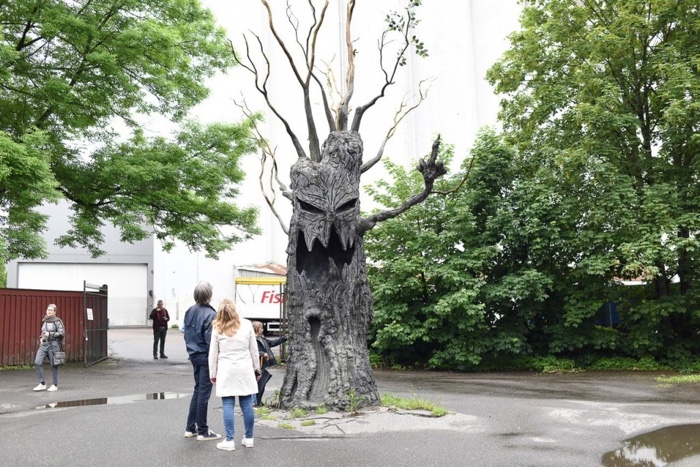
Anne de Vries, Ex, 2017. Installation viewat MOMENTUM10, The Emotional Exhibition. Photo by Ingeborg Øien Thorsland
Because of the curatorial choice, this year’s edition of the biennial is accompanied by the usual catalogue but also by a reader. I read the latter on my way back from Moss. The book gathers memories from the curators of the previous editions of the biennial. Reading through the pages, i realized two things. First, that many of the artists who participated to the early editions of MOMENTUM have since become well-known names across the world: Olafur Eliasson, Ragnar Kjartansson, N55, Elmgreen & Dragset, Annika Larsson, Nathalie Djurberg, Jeppe Hein, Tue Greenford… They’ve all shown in Moss at the beginning of their careers.
More interestingly, the interviews with the curators of previous editions reveal how much a biennial, its message, atmosphere, ethos and preparation can collide with local politics and international crises.
Over the years, curators and artists of MOMENTUM had to grapple with various issues. Post 9/11 anxiety, the immediate aftermath of the 2008 financial collapse, the election of Trump and other international events had a clear impact on the mood and profile of the biennials. At times, local sociopolitical affairs also influenced what visitors saw. The event thus went through a music event that almost no one attended because there was no funding left to advertise it, the necessity to use part of the curatorial budget to install a lift for people with disabilities inside the Momentum Kunsthall, the frustration of visitors when some of the artworks where buried inside a time capsule that will only be opened in 2061 and projects that were never allowed to be realized (one of them consisted in Wooloo’s seemingly innocuous proposal for a garden that would have been left untouched for two years), etc. Still, all the curators interviewed seem to have fond memories of their experience in Moss though.
And so did i! Here’s a quick run-through some of the works i found particularly interesting this year (more to come!):
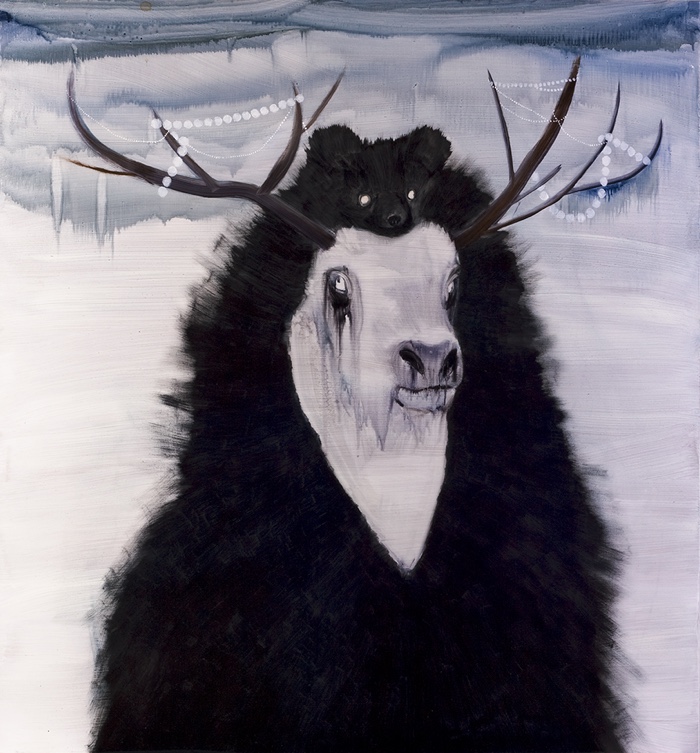
Hannaleena Heiska, In My Kingdom Cold, from the series Not of this World, 2009
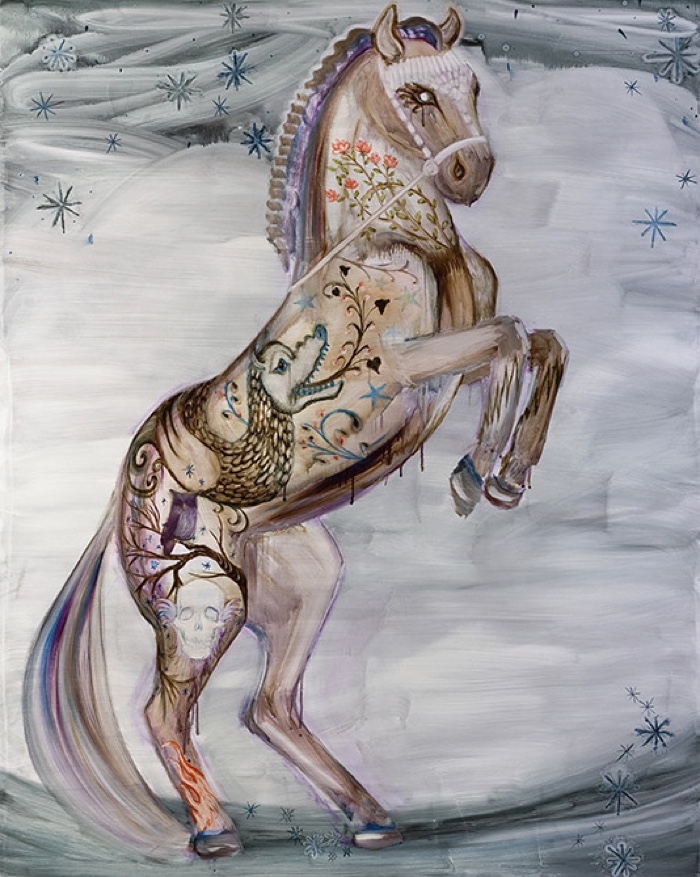
Hannaleena Heiska, Beyond The Great Vast Forest, from the series Not of this World, 2009
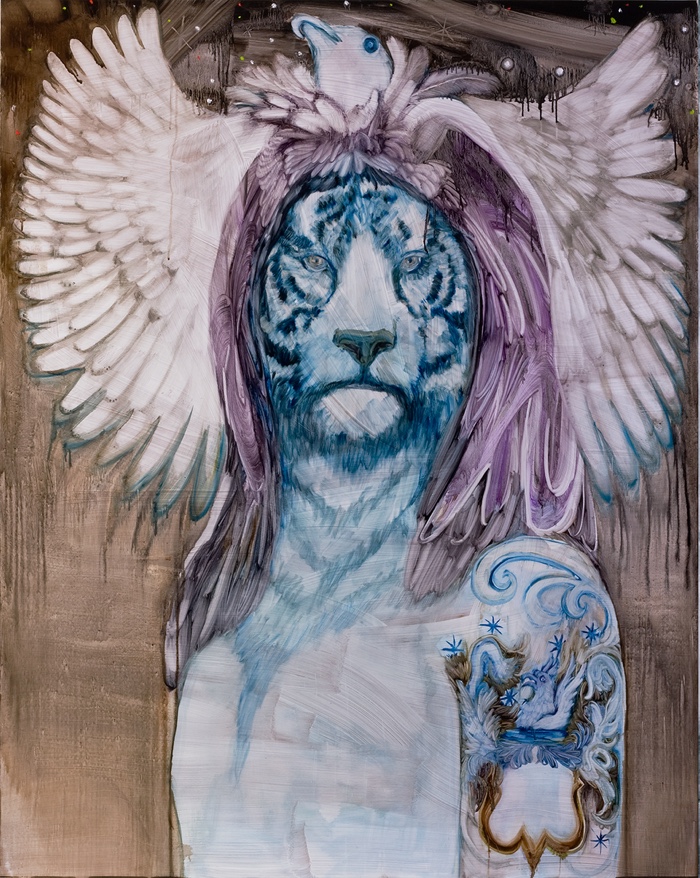
Hannaleena Heiska, from the series Not of this World, 2009
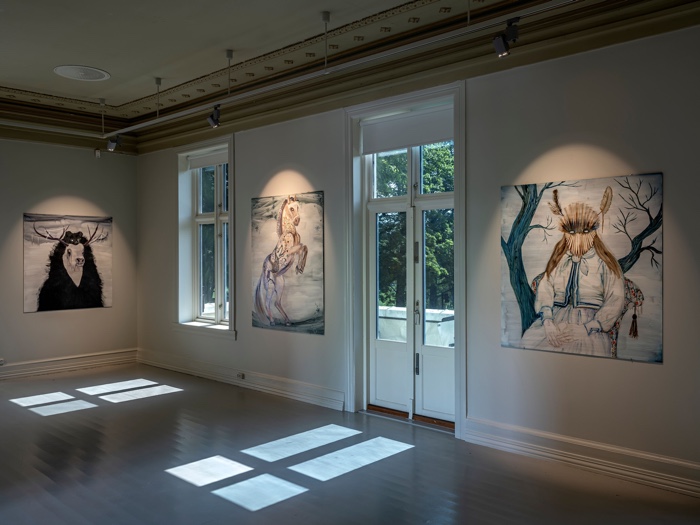
Hannaleena Heiska, Stargazer, 2007. Installation view at MOMENTUM10. Photo: Vegard Kleven
Hannaleena Heiska‘s work was the best discovery of the biennale for me. Her oil paintings bring us closer to a kind of northern mindset inhabited by mysterious creatures, light made brighter by snowy landscapes and black metal music. The non-human animals in the paintings are covered in tattoos, the human ones wear masks. Unless they are hybrid creatures. What is certain is that each of them has an almost mythical aura.
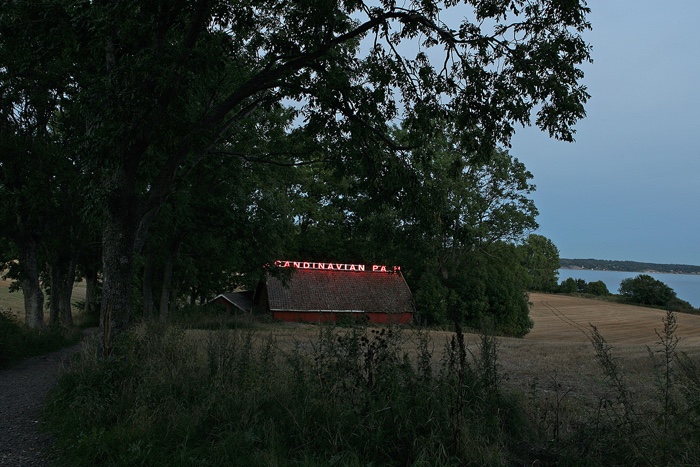
Ragnar Kjartansson, Scandinavian Pain, 2006. Installation commissioned for Momentum 4th Nordic Festival of Contemporary Art, Moss, Norway. Photographer Terje Holm
In 2006, Ragnar Kjartansson installed an eleven-metre long pink neon sign on top of a dilapidated barn outside a gallery in Moss. I remember seeing a photo of it at the time. I was fascinated by the words “Scandinavian Pain ” and kept wondering what it meant. It alluded to the impression (or maybe the cliché) of a Nordic identity characterised by a propensity to pain and melancholia, fed by Munch’s scenes, long dark winter hours and gloomy scandi-drama. Kjartansson spent a week in the barn performing all the stereotypes associated with broody machismo.
MOMENTUM10 intended to show the neon work again in Moss. However, the piece now belongs to the Malmö Moderna Museet collection. The museum decided that the neon was too fragile to be shown outside. Kjartansson is still part of MOMENTUM10 but in the form of a photography.
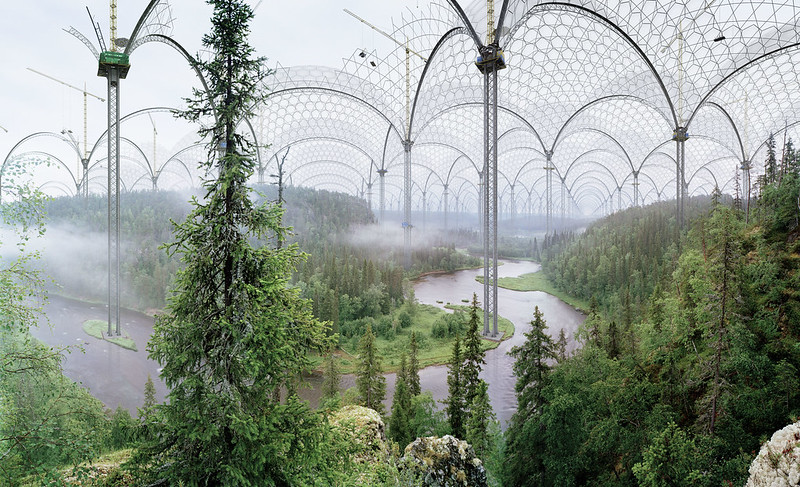
Ilkka Halso, Kitka River, 2004
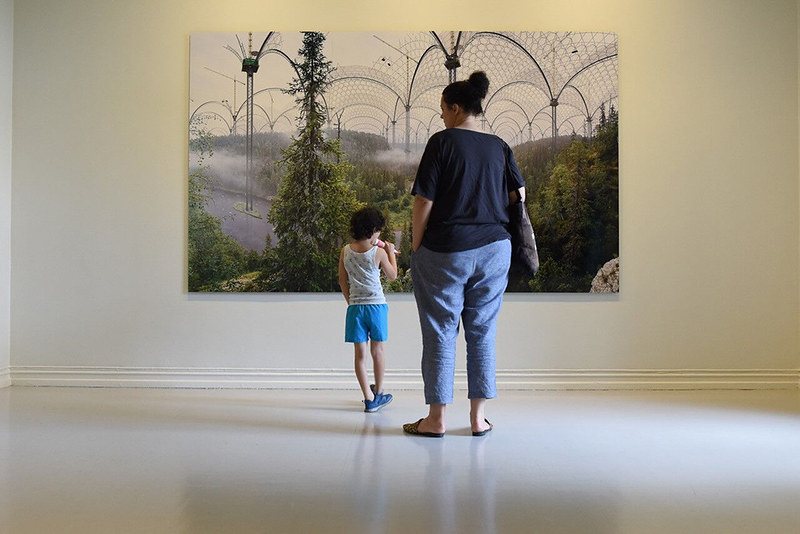
Ilkka Halso, Kitka River, 2004. Installation view from the opening of MOMENTUM10, The Emotional Exhibition. Photo by Ingeborg Øien Thorsland
Fifteen years ago already, photographer Ilkka Halso envisioned a world where radical measures have been taken to protect nature from human ruthlessness. Forests, lakes and rivers and other pieces of landscapes will be confined to museums, massive greenhouses, amusements parks.
Nature is reduced to a series of islands disconnected from each other and from their surrounding, each of them put in an artificial state of suspension for the visual pleasure of the human spectator.
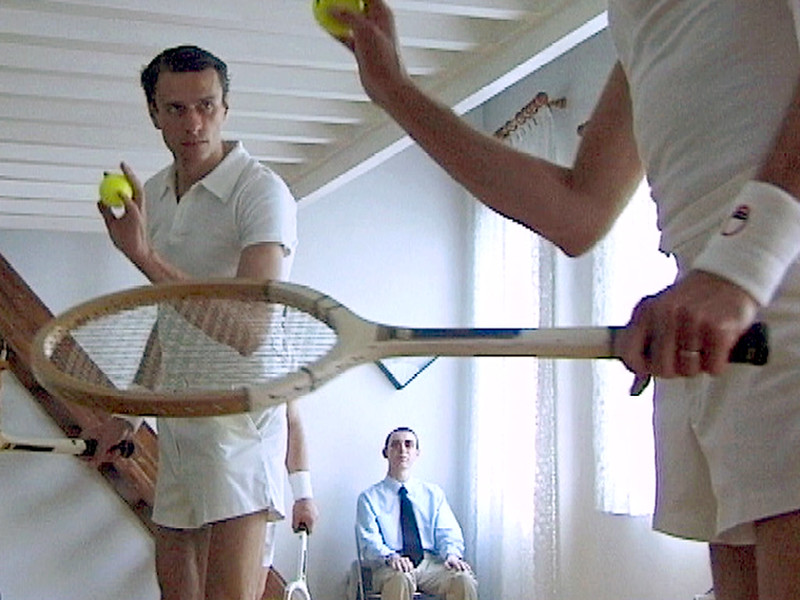
Annika Larsson, 40-15, 1999
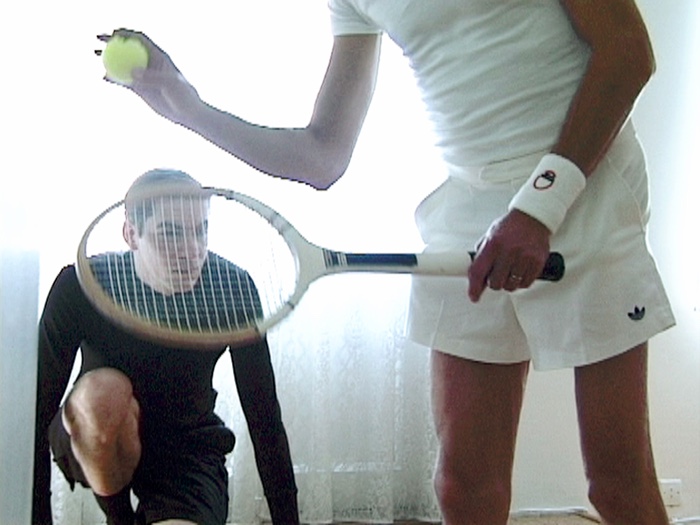
Annika Larsson, 40-15, 1999
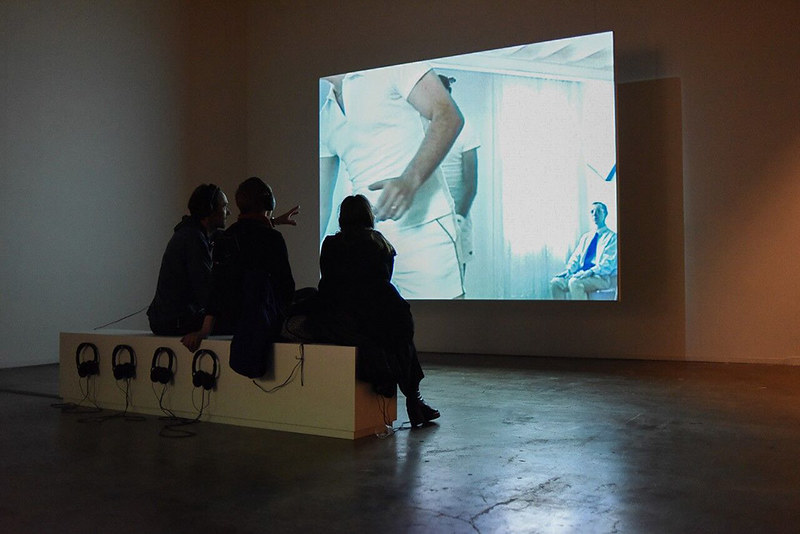
Annika Larsson, 40-15, 1999. Installation view from the opening of MOMENTUM10, The Emotional Exhibition. Photo by Ingeborg Øien Thorsland
Annika Larsson must be one of my favourite video artists in the world. 40-15 captures a tennis match played by men in front of a mirror inside a white, claustrophobic interior. The tiny shorts, the absence of dialogue, the slow-motion tempo and the camera close-ups turn the men into sexualised objects. The gestures are casual but one can sense an underlying edginess too. You’ll never get the full story, you can only speculate on the narcissism, tensions and the power struggles behind these men’s mundane sports rituals.
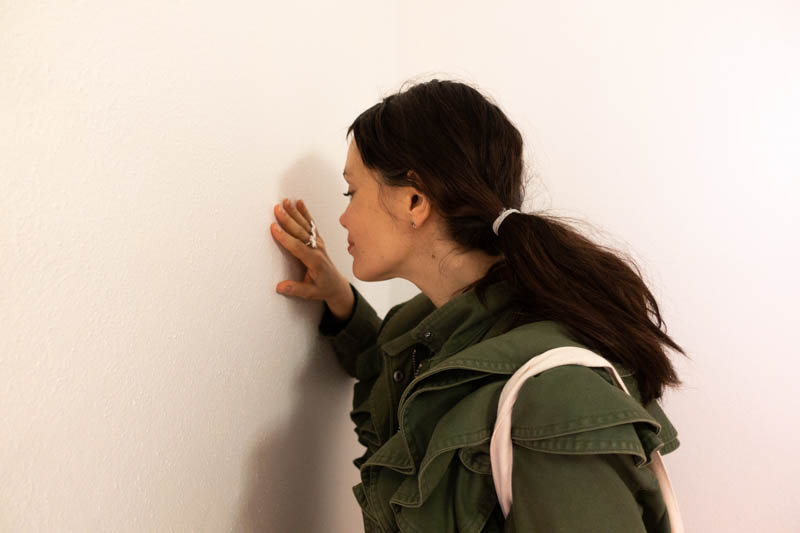
Sissel Tolaas, Molecule MOVX_015, 2015. Installation view and VERY flattering photo of myself at MOMENTUM10. Thank you BelinArtLink!
Another work brought back from past editions is Sissel Tolaas’ Molecule MOVX_015, a scent she created for the 8th edition of the biennale. She coated the walls of a small room of Momentum Kunsthall with a paint that you can’t detect unless you scratch and sniff the surface. The scent is meant to evoke a feeling of being isolated (because Nordic people are supposed to cherish isolation and their little cabins in the countryside) as well as an awareness that art can take an olfactory form.
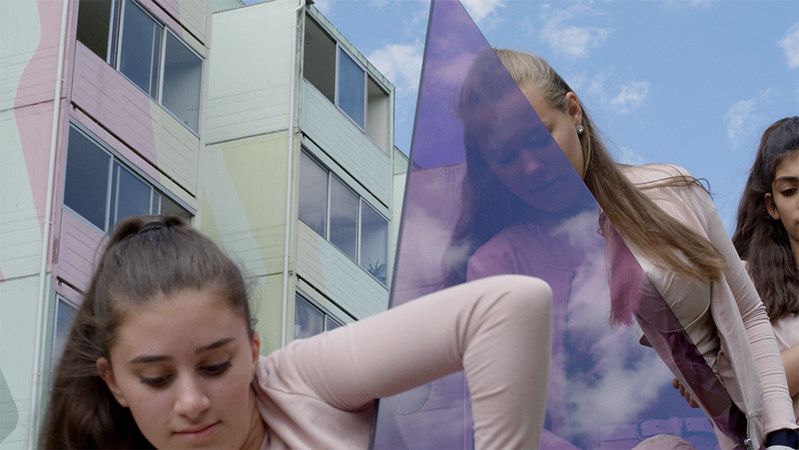
Johanna Billing, In Purple, 2019
Johanna Billing, In Purple (trailer), 2019
Johanna Billing’s In Purple video pays homage to a group of women who run a hip-hop/afro and dance school called the Mix Dancers Academy for young women and girls in Råslätt, a suburb of Jönköping in Sweden.
Local politicians and media hail the group as a successful example of a self-organised initiative. Yet, they provide the school with little to no support. The school runs on a voluntary basis and struggles to continue providing hundreds of children with dance lessons from a rented basement. The video also hints at a urban environment that never truly welcomes the community of dancers. Like many estates built in the 60s and 70s, outdoor spaces in Råslätt have been designed with male sporting activities in mind.
The film follows a physically demanding parade. A group of young dancers move slowly through the housing area’s pedestrian paths and greenery, collectively carrying large heavy sheets of purple coloured glass. The glass plays with the pink, green and purple from the surrounding concrete facades made by artists Jon Pärson and Lennart Joanson, who in the 1980s painted 80 000 square metres of building surface to soften the concrete architecture. At some point, the glass panes are transferred to a group younger dancers, in a move that symbolises the responsibility of ‘passing on’ their role to the young women who will need to take over and run the school when the older generation leaves for paid jobs.
The performance raise questions around precarious working conditions for non-profit organisations and associations in the area (and elsewhere.)
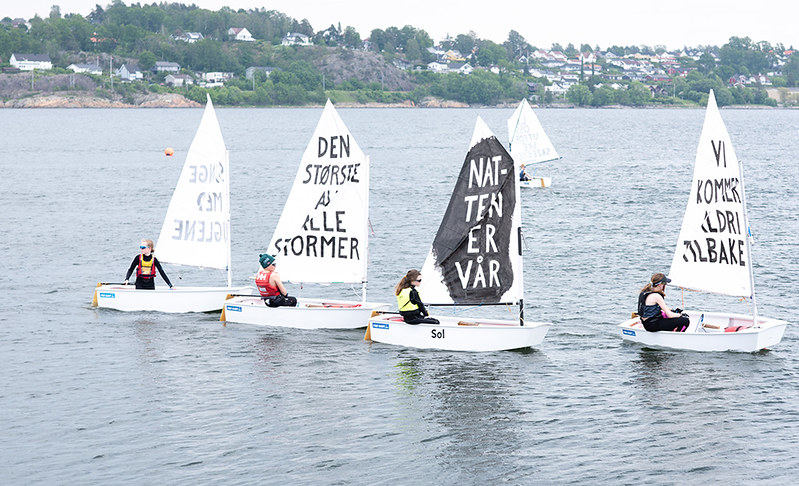
Pauline Fondevila, The Promise by the Sea, 2018. Performance at MOMENTUM10, The Emotional Exhibition. Photo by Texas AS
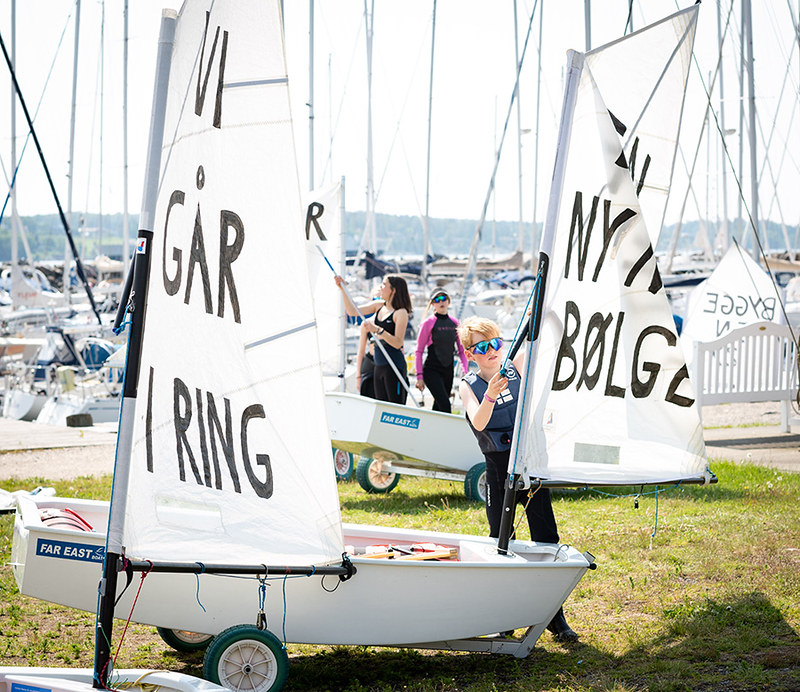
Pauline Fondevila, The Promise by the Sea, 2018. Performance at MOMENTUM10, The Emotional Exhibition. Photo by Texas AS
The Promise by the Sea was a performance for young boys who braved the turbulent sea in small boats, sails painted with words in Norwegian that said “We will never come back”, “The world is burning,” “Never work,” etc. The strong wind and the spontaneous movements of the boys mix and match the slogans over the course of the performance, creating an improvised, almost random poetry.
More images from MOMENTUM10:
MOMENTUM10 – The Emotional Exhibition
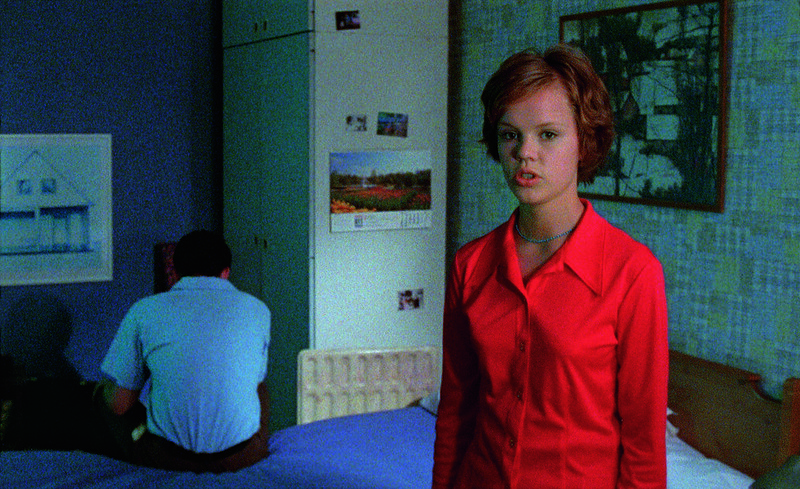
Eija-Liisa Ahtila, Today, 1996-1997
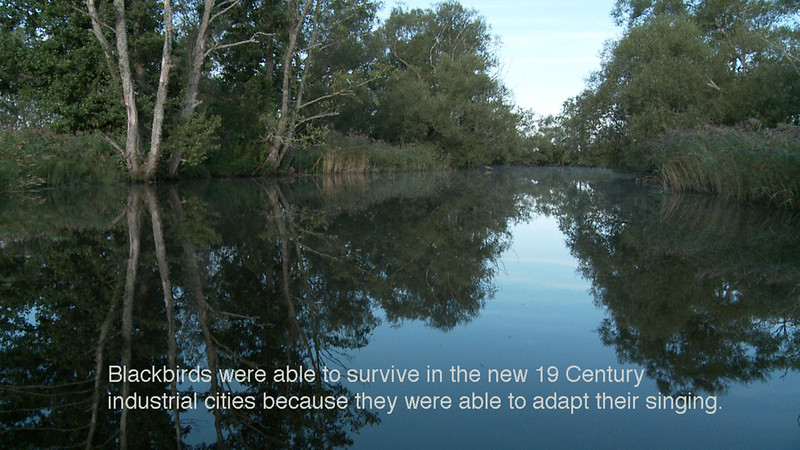
Saskia Holmkvist, Blind Understanding, 2009/2019
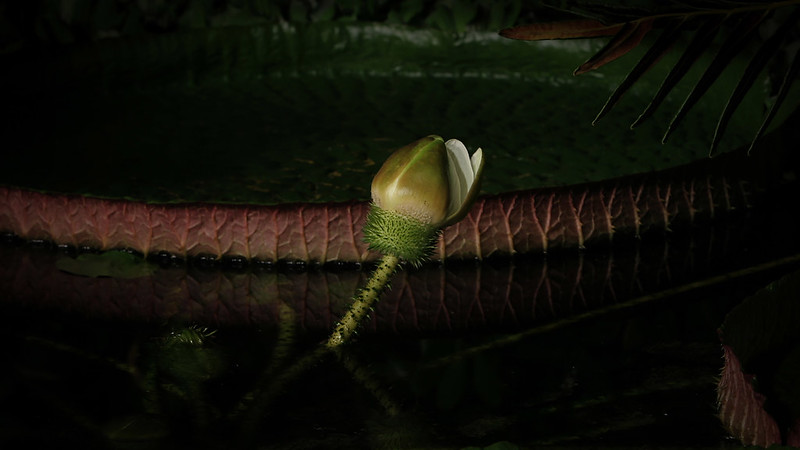
Salla TykKä, Victoria, 2008
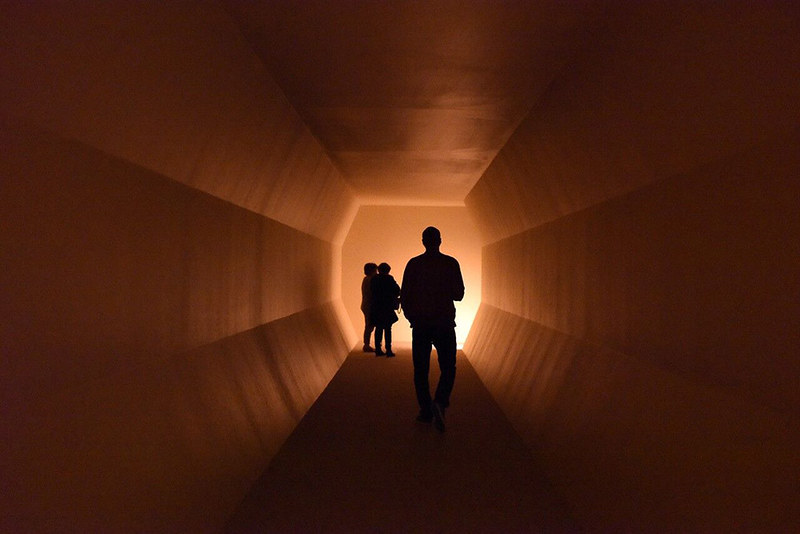
Knut Âsdam, Psychasthenia, 1998. Installation view from the opening of MOMENTUM10, The Emotional Exhibition. Photo by Ingeborg Øien Thorsland
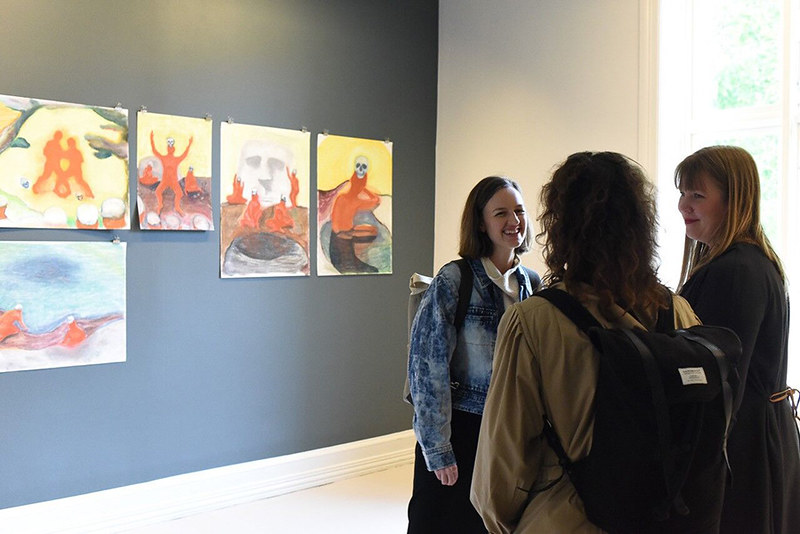
Eirik Senje, Installation view from the opening of MOMENTUM10, The Emotional Exhibition. Photo by Ingeborg Øien Thorsland
The tenth edition of Momentum, The Nordic Biennial of Contemporary Art, curated by Marti Manen with the assistance of Anne Klontz, remains open until 9 October 2019 in Moss, Norway. The locations of MOMENTUM10. The Emotional Exhibition are: Momentum Kunsthalle, Gallery F15, House//of//Foundation. Besides, a few public art pieces are scattered around the city.
I covered MOMENTUM9 two years ago: MOMENTUM9 – “Alienation is our contemporary condition”, MOMENTUM9. Maybe none of this is science fiction, MOMENTUM 9: A case for user-alienating design and The scars left by electronic culture on indigenous lands.

